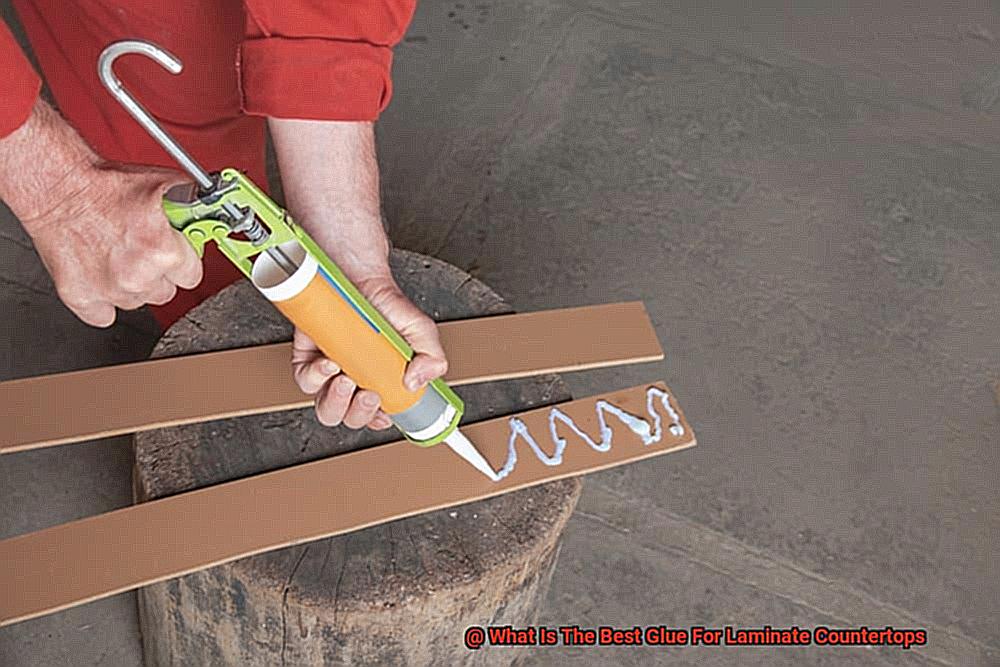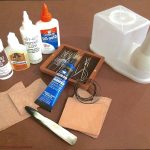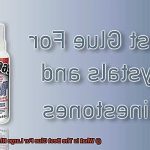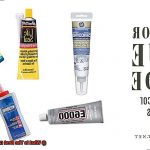Ready to give your kitchen a fresh new look? Laminate countertops are all the rage for their toughness, affordability, and trendy style. But when it comes to installing or fixing them up, finding the right glue can be a real head-scratcher.
But fret not. In this comprehensive guide, we’ll dive into the world of adhesives and uncover the best glue for laminate countertops. Whether you’re a seasoned DIY pro or a newbie homeowner taking on your first renovation project, this blog post will arm you with all the knowledge you need to make an informed decision.
We’ll take you on an exciting journey, exploring some top-notch products that have stood the test of time. We’ll talk about their features, how to apply them like a pro, and even spill the beans on their pros and cons. So buckle up and let’s find that perfect glue that’ll keep your laminate countertops firmly in place while adding some serious pizzazz to your kitchen.
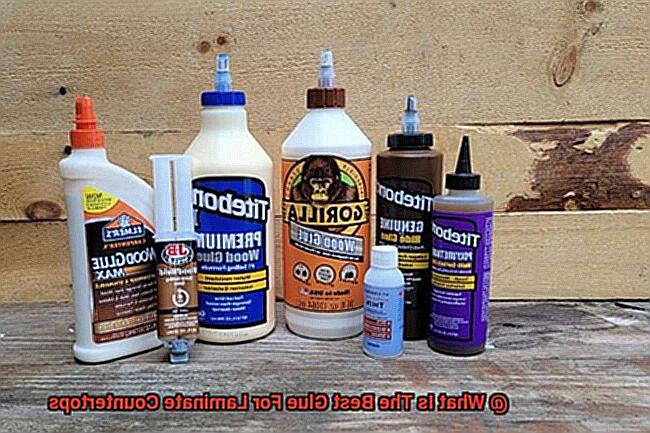
What is Contact Cement Adhesive?
Contents
- 1 What is Contact Cement Adhesive?
- 2 Benefits of Using Contact Cement Adhesive for Laminate Countertops
- 3 Popular Brands of Contact Cement Adhesives for Laminate Countertops
- 4 Steps to Follow When Using Contact Cement Adhesive
- 5 Other Types of Glue for Laminating Countertops
- 6 Tips to Remember When Purchasing Contact Cement Adhesive
- 7 Conclusion
When it comes to securing laminate sheets to your countertops, you need an adhesive that is strong, durable, and reliable. That’s where contact cement adhesive comes into play. This versatile glue is specially designed for laminating countertops, offering an instant and long-lasting bond. In this article, we will delve into the world of contact cement adhesive and explore its benefits, applications, and best practices for bonding laminate countertops.
The Strength of Contact Cement Adhesive:
Contact cement adhesive is renowned for its ability to create a powerful bond between two surfaces. Whether you’re working with high-pressure or low-pressure laminate, this adhesive ensures a secure attachment that can withstand the demands of daily use. It forms an immediate bond when the laminate and countertop come into contact, resulting in a strong and permanent connection.
Types of Contact Cement Adhesives:
Contact cement adhesive is available in two main formulations: water-based and solvent-based. Water-based adhesives offer excellent moisture resistance and have a milder odor compared to solvent-based alternatives. On the other hand, solvent-based adhesives provide exceptional heat resistance and are suitable for applications where countertops are subjected to high temperatures.
Proper Application Techniques:
To achieve optimal results when using contact cement adhesive for laminate countertops, it is crucial to observe proper application techniques. Apply the adhesive evenly to both the countertop surface and the backside of the laminate sheet. Allow the adhesive to dry until it becomes tacky before firmly pressing the two surfaces together. Following the manufacturer’s instructions carefully during every step of the process is essential.
Considerations and Alternatives:
While contact cement adhesive offers impressive bonding capabilities, it may not be suitable for all applications. Factors such as temperature changes and heavy usage can impact its performance over time. Seek guidance from professionals or manufacturers to determine the best adhesive for your specific laminate countertops and their intended use. Additionally, other types of adhesives, such as epoxy, polyurethane, and construction adhesives, may also be viable options depending on your project requirements.
Benefits of Using Contact Cement Adhesive for Laminate Countertops
Well, buckle up because we’re about to dive into the world of contact cement adhesive and why it’s the ultimate choice for your laminate countertop project. Trust me, you won’t want to miss out on this glue-some information.
First and foremost, let’s talk about the incredible strength of contact cement adhesive. This specialized adhesive is formulated specifically for bonding laminates, ensuring a bond that’s as strong as Hulk’s biceps. Once applied and pressed onto the surface, contact cement adhesive creates a permanent bond that can withstand moisture, heat, and chemicals. Your countertop will stay firmly in place, even under heavy use.
Flexibility is another key advantage of using contact cement adhesive. With this glue on your side, your laminate countertop can expand and contract with temperature changes without compromising the bond. So whether you live in a place with fluctuating temperatures or high humidity levels, your countertop will stay put without any worries.
Now let’s talk about how easy it is to work with contact cement adhesive. No need for complicated mixing or preparation – just grab a can or tube, and you’re good to go. Using a brush or roller, you can easily spread the adhesive onto both the countertop surface and the back of the laminate sheet. This ensures a consistent and even application, giving you a professional-looking result.
Time is of the essence when it comes to DIY projects, right? Well, contact cement adhesive has got you covered there too. Once applied, it typically dries within 15-30 minutes, allowing for immediate bonding of the laminate sheet. No need to wait around all day – you’ll be able to enjoy your newly installed countertop in no time.
We can’t forget about moisture resistance when it comes to kitchen and bathroom countertops. Luckily, contact cement adhesive creates a waterproof seal between the laminate and the countertop surface. This means no water or liquid will seep through and cause any damage. So go ahead, spill that glass of water – your countertop will stay looking fabulous.
Last but certainly not least, let’s talk about repairs. Accidents happen, right? Well, if you ever encounter any issues with your laminate countertop, such as peeling or lifting edges, contact cement adhesive is your best friend. It allows for easy reapplication or repairs without having to replace the entire countertop. Saving you time, money, and a headache.
In conclusion, using contact cement adhesive for your laminate countertops is a glue-some choice. It provides a strong and permanent bond, flexibility, ease of application, fast curing time, resistance to moisture, and easy repairability. So why settle for anything less when you can have the best? Go ahead and give contact cement adhesive a try – your countertops will thank you.
Popular Brands of Contact Cement Adhesives for Laminate Countertops
Transform your outdated countertops into a stunning focal point with the help of contact cement adhesives for laminate countertops. These remarkable glues are like superheroes in the adhesive world, providing a robust and long-lasting bond between laminate sheets and substrates. In this blog post, we will explore some popular brands of contact cement adhesives that will make your laminate countertop project a breeze.
First on the list is DAP Weldwood. This trusted name in the adhesive industry offers both water-based and solvent-based formulas, giving you the freedom to choose the one that suits your needs. DAP Weldwood’s high strength and quick dry time make installation a breeze.
Next up is 3M Super 77 Multipurpose Adhesive. While not specifically marketed for laminate countertops, this versatile adhesive has earned a reputation for its strong bond, quick drying time, and easy application. It’s perfect for securing laminate sheets to countertops.
For those looking for an environmentally friendly option, Wilsonart H2O Waterborne Adhesive is the way to go. This water-based adhesive is low in VOCs and offers excellent bonding strength. Plus, it has a low odor, making it an ideal choice for eco-conscious individuals.
Last but certainly not least is Formica Contact Adhesive. Specially formulated for bonding Formica laminate sheets to various substrates, this adhesive provides a strong and durable bond that ensures your laminate stays securely attached to the countertop surface.
Remember, when using any adhesive, it’s crucial to follow the manufacturer’s instructions and conduct a small test in an inconspicuous area. Each brand may have variations in their formulas and application methods, so choose the one that best suits your needs.
Steps to Follow When Using Contact Cement Adhesive
Well, my friend, you’re in luck. Today, we’re going to talk about the superhero of adhesives: contact cement adhesive. With just a few simple steps, you can transform your laminate countertops into a stunning masterpiece that will leave your friends and family in awe.
Step 1: Prepare the surface
Before applying the contact cement adhesive, it is crucial to prepare the surface of the laminate countertop. Start by cleaning the surface thoroughly to remove any dirt, grease, or residue. Use a mild detergent or a specialized laminate cleaner and a soft cloth to wipe down the entire countertop. Once clean, rinse with water and allow it to dry completely. Trust me, cleanliness is key.
Step 2: Apply the adhesive
Contact cement adhesive is typically applied to both surfaces that need to be bonded together – in this case, the underside of the laminate countertop and the top of the substrate or base material. Use a brush or a roller to apply a thin, even layer of adhesive to both surfaces. Pay attention to the edges and corners, ensuring that they are adequately coated.
Step 3: Allow the adhesive to dry
After applying the adhesive, it is essential to let it dry before joining the surfaces together. This drying period allows the adhesive to become tacky and ready for bonding. Refer to the manufacturer’s instructions for the recommended drying time, as it may vary depending on the brand and type of contact cement adhesive being used. Patience is a virtue, my friend.
Step 4: Position and align the laminate
Once the adhesive has dried, carefully position the laminate sheet onto the substrate surface. It is crucial to align it properly as contact cement adhesive bonds instantly upon contact, and adjustments will not be possible once the surfaces touch. Use spacers or dowels to keep a small gap between the laminate sheet and the substrate, allowing room for any adjustments if needed.
Step 5: Press and roll
To ensure a strong bond, firmly press down on the laminate sheet once it is in position. Use a laminate roller or a rolling pin to apply even pressure across the entire surface, working from one end to the other. This step helps to eliminate any air bubbles and ensures good contact between the laminate and the substrate. Don’t be afraid to put some muscle into it.
Step 6: Trim and clean up
After the laminate has been successfully bonded to the countertop, trim off any excess material using a router or a sharp utility knife. Be careful to follow the desired edge profile and make smooth, clean cuts. Once trimmed, clean up any adhesive residue or smudges using an appropriate solvent recommended by the adhesive manufacturer. You want those edges looking sharp.
Other Types of Glue for Laminating Countertops
Choosing the right glue for laminating countertops is no small task. The bond between the laminate and the countertop needs to be strong and durable, enduring the hustle and bustle of a busy kitchen. While contact cement is a popular choice, there are other glues available that offer unique benefits. Let’s dive into the world of alternative options and discover the perfect adhesive for your kitchen countertop project.
Contact Cement: The Classic Choice
When it comes to laminating countertops, contact cement reigns supreme. Its quick adhesion and ability to withstand high temperatures make it a go-to adhesive. With a bond that lasts for years, your countertop will stay intact even in the most chaotic kitchens.
Epoxy Adhesive: Conquer Moisture with Confidence
For countertops frequently exposed to water, epoxy adhesive is the ultimate hero. This two-component glue forms an unbreakable bond and exhibits exceptional resistance to moisture. Say goodbye to worries about spills and humidity in your kitchen or bathroom.
Polyurethane Adhesive: Versatility Meets Flexibility
When versatility is key, polyurethane adhesive steps up to the plate. This adhesive can handle various applications, including laminating countertops. Its strong yet flexible bond makes it perfect for areas prone to movement or vibration. With impressive resistance to water and heat, it’s a match made in heaven for kitchen countertops.
Glue Selection Considerations: A Recipe for Success
Choosing the right glue requires careful consideration of factors such as the type of laminate, intended application, and personal preferences. Don’t be afraid to experiment by testing different glues on small samples or seeking advice from professionals. This ensures that you find the perfect glue tailored to your specific project needs.
Surface Preparation: Key to Unlocking the Perfect Bond
No matter which glue you choose, proper surface preparation is the secret ingredient for success. Immaculately clean, dry, and debris-free surfaces are essential for optimal adhesion. Consider sanding the countertop surface to create a textured canvas for the glue to bond effortlessly.
Tips to Remember When Purchasing Contact Cement Adhesive
Selecting the right adhesive is crucial for a successful laminate countertop project. Contact cement adhesive is a popular choice due to its reliability and resistance to heat and moisture. In this article, we will discuss important factors to consider when purchasing contact cement adhesive for your laminate countertop project.
Consider the Type of Laminate Material:
Different laminate materials have unique characteristics that may require specific adhesives for optimal bonding. High-pressure laminate and low-pressure laminate, for example, have different composition and surface textures. To ensure a strong bond, ensure that the contact cement adhesive you choose is compatible with your specific laminate material.
Check Drying Time:
Time is of the essence when working on a countertop project. To keep your project moving forward efficiently, opt for contact cement adhesive with a quick drying time. This will allow you to proceed with the next steps without compromising the strength of the bond.
Choose the Right Application Method:
Contact cement adhesive can be applied using a brush, roller, or spray. Select the application method that suits your comfort level and the complexity of your project. A brush or roller may provide more control for precise application, while a spray can be quicker and more convenient for larger surfaces.
Verify Special Preparation Requirements:
Before applying the adhesive, it’s important to check if any special preparation is required. Some adhesives may need stirring or mixing, while others can be used straight out of the container. By following the manufacturer’s instructions for preparation, you can ensure optimal performance and a strong bond.
Calculate Coverage Area:
To avoid running out of adhesive in the middle of your project, it’s crucial to estimate how much you will need based on the size of your laminate countertops. Remember that it’s better to have extra adhesive on hand than to face delays or compromise the quality of the bond.
Read Customer Reviews:
Research and read customer reviews and ratings of different contact cement adhesives. This will provide valuable insights into the performance and reliability of the product from people who have used it for similar projects. Look for adhesives that have positive feedback and a track record of delivering strong and long-lasting bonds.
zz55GWYTefo” >
Conclusion
To sum up, the best glue for laminate countertops is undoubtedly contact cement adhesive. Its exceptional strength, durability, flexibility, and ease of application make it the ultimate choice for laminating countertops.
Contact cement adhesive forms an unyielding bond between laminate sheets and substrates, guaranteeing a secure attachment that can withstand the rigors of daily use. Whether you prefer a water-based or solvent-based formulation, contact cement adhesive offers options to suit your specific needs and preferences.
But applying contact cement adhesive correctly is paramount to achieving optimal results. The key is to apply it evenly to both surfaces and allow it to dry until tacky before pressing them together. Following the manufacturer’s instructions meticulously throughout the process is also crucial.
While contact cement adhesive reigns supreme for most laminate countertop projects, there are other adhesives worth considering depending on your unique requirements. Epoxy adhesive excels in moisture resistance, polyurethane adhesive offers remarkable versatility and flexibility, and construction adhesives may prove suitable for certain applications.
When it comes to popular brands of contact cement adhesives for laminate countertops, DAP Weldwood, 3M Super 77 Multipurpose Adhesive, Wilsonart H2O Waterborne Adhesive, and Formica Contact Adhesive take center stage. Each brand boasts its own distinctive features and application methods.
In conclusion, using contact cement adhesive for laminate countertops guarantees an unbreakable bond that can withstand moisture, heat, and everyday wear and tear. It’s a breeze to work with and allows for repairs without having to replace the entire countertop.

